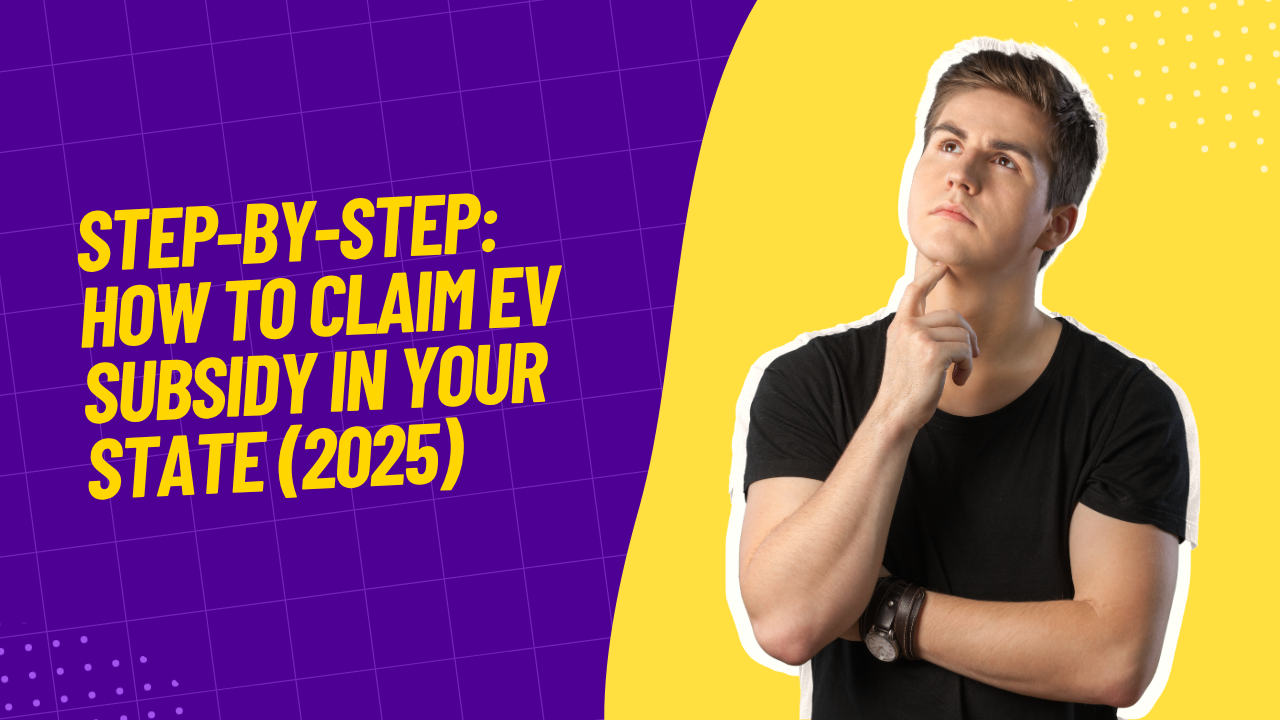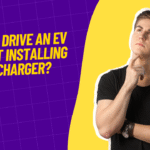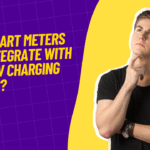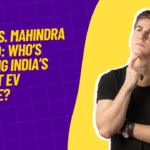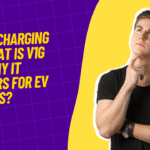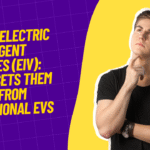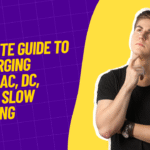Electric vehicles (EVs) are accelerating the shift toward cleaner transport in India, and government incentives make them even more compelling. Central schemes like FAME II offer up to ₹1.5 lakh subsidy on electric cars and several thousand rupees on two-wheelers. Meanwhile, states such as Delhi, Maharashtra, Karnataka, and Tamil Nadu enhance the benefits with their own incentives. This guide walks you through every step to successfully claim EV subsidies in 2025—from policy awareness to final disbursal—so you don’t miss out on savings.
2. Understand Central vs State Subsidies
2.1 Central Subsidy under FAME II
- Two-wheelers: up to ₹15,000 per vehicle
- Four-wheelers: up to ₹1.5 lakh per vehicle
- Buses and three-wheelers also included
These are disbursed at Point of Sale via OEM/dealer after registration.
2.2 State-Level Subsidies
Stand-alone incentives that vary by state in offer type (rebates, tax waivers, scrappage bonus). Some notable examples:
- Delhi: ₹1 lakh + additional ₹25,000 scrappage scheme
- Karnataka: ₹1 lakh rebate + 100% road tax waiver
- Maharashtra: ₹50,000 rebate + GST/re-registration waiver
- Tamil Nadu: 15% of cost up to ₹1 lakh after central subsidy
Collectively, EV buyers can save ₹3–5 lakh on small EVs.
3. Eligibility Criteria Checklist
Ensure you meet eligibility:
- Vehicle type: Only new, registered EVs under FAME-certified models
- Citizenship & address: Resident of the state offering subsidy
- Vehicle registration: In same state; inter-state purchases usually barred
- Non-transferability: Claim only once per vehicle
- Battery & Range: Compliance with specified specs (e.g., >60 km battery, 40 kW power)
4. Documents You’ll Need
- Copy of ARAI certificate (usually handled by dealer)
- Invoice & sales contract with subsidy mentioned
- Dealer-endorsement form for FAME II subsidy
- Government-issued ID proof and address proof
- Vehicle registration certificate
- Bank account details (if direct bank transfer is required)
- Old vehicle RC (in scrappage cases)
- Affidavit/residence certification if needed
5. Step-by-Step Claim Process
5.1 Step 1: Choose FAME-Certified EV
Verify your chosen model is on the FAME II Classified Models list to ensure automatic central incentive eligibility.
5.2 Step 2: Select a Registered Dealer
Choose a dealer in your state who is registered under FAME II and is eligible to pass the subsidy at point of sale.
5.3 Step 3: Purchase & Pay Invoice
Pay the invoice after deduction of the central subsidy. The dealer processes FAME incentive reimbursement from the government themselves.
5.4 Step 4: Claim State Incentive
This depends on your state:
- Fill the State EV subsidy form (available on the official state transport website or RTO portal).
- Upload vehicle & personal details, purchase invoice, RC, ID, and bank proof.
- Submit online; receive acknowledgment & application reference.
Some states may require visiting RTO for verification of documents.
5.5 Step 5: Follow Up
- Check the application tracker on the portal with your reference number.
- Scrutiny may ask for corrections; respond promptly.
- Approval typically within 1–3 months.
Result: Subsidy auto-deposited to your bank.
6. State-Wise Claim Guide
6.1 Delhi
- Central + ₹1 lakh + ₹25k scrappage
- Submit at Delhi Transport Department portal
- Common documents: Invoice, ID, old RC, scrappage cert
6.2 Karnataka
- ₹1 lakh rebate + road tax waiver
- Submit via KANTOAD website or e-portal
- Requires form TR 50 & state-form KRB‑1
6.3 Maharashtra
- flat ₹50k + GST waiver
- Register via Maha RTO; bring Invoice & RC
- Road tax automatically waived after registration
6.4 Tamil Nadu
- 15% EV cost rebate after central subsidy
- Online via TN e-Services with Invoice & RC
(Note: Other states like UP, Gujarat, Odisha have evolving schemes—always verify on official portals.)
7. Common Issues and Pitfalls
- Unregistered Dealer: No central subsidy if dealer not FAME-certified
- Inter-state purchase: State subsidy denied if RC is out-of-state
- Incomplete documents: Delay due to missing IDs or RC
- Bank errors: Double-check IFSC, account, and passbook upload
- Lapsed deadline: Filing windows range from
- Delhi: 90 days
- Karnataka: 120 days
Missing deadlines may forfeit subsidies
8. Tracking Your Subsidy
- Central subsidy is reflected on dealer invoice and settled behind the scenes
- State subsidy status can be tracked via state’s e-portal or RTO
- Funds are usually disbursed via direct bank transfer within 2–3 months
9. Edu Tips for Smooth Processing
- Buy off-the-shelf inspirational forms and double-check
- Confirm dealer logs you into e-portal at purchase
- Scan all documents clearly under bright light
- Check RC registration date matches invoice date
- Keep your scrap vehicle ready with proper scrappage letter
- Follow up fortnightly on portal or RTI if stuck
10. Frequently Asked Questions (FAQ)
Q1. Do I need to visit RTO in person?
Mostly not—most states allow completely online submission of subsidy claims.
Q2. When will I receive subsidy funds?
Typically 60–90 days post submission; some states like Delhi act within a month.
Q3. Can I claim multiple subsidies per family?
Yes—as long as they’re different vehicles purchased separately.
Q4. What if my vehicle is purchased in another state?
You’ll get central subsidy, but local state subsidy is usually denied.
Q5. Can I claim subsidy on used EVs?
No—subsidies apply only to new vehicles registered first time in that state.
Q6. Is the subsidy taxable?
No—these are considered government incentives and not taxed as income.
11. Conclusion
Claiming EV subsidies in 2025 requires understanding central and state schemes, gathering correct documents, and submitting application promptly. With combined incentives, your total savings on small EVs can reach ₹3–4 lakh, making the switch financially attractive. Follow this guide carefully, stay updated on state changes, and you’ll navigate the process smoothly. Safe, clean, and cost-effective EV ownership starts with smart subsidy claims.
